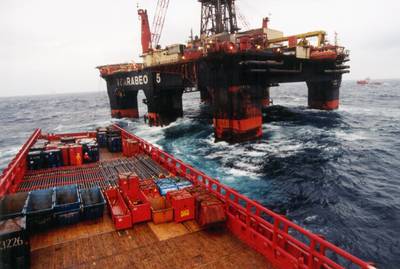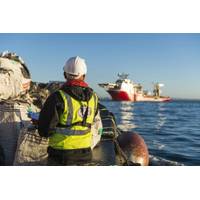Industry Addressing Offshore Pipeline Risk
Offshore carbon dioxide (CO2) pipelines could potentially pose a risk for offshore infrastructures, ships and the marine environment. To demonstrate that CO2 pipelines can be operated safely and to ensure the risks are well understood, industry stakeholders have asked DNV GL to initiate a Joint Industry Project (JIP) “CO2 Subsea Releases - Small Scale Experimental Program’’.
Several major operators have already joined the ‘Sub-CO2’ JIP including: National Grid (NGG), ENI, and Petrobras, but there is still time for others to join.
The number of offshore CO2 pipelines is expected to grow significantly in the future, as Carbon Capture Utilisation & Storage (CCUS) technology is deployed to mitigate CO2 emissions from power plants or other large industrial sources such as steel or cement factories.
“CCUS is again gaining momentum as part of the solution in meeting climate goals while also securing sufficient energy. As fossil based fuels continue to be part of the energy mix in the foreseeable future, CCUS will be critical particularly for redusing emissions from coal fired power plants. With this JIP DNV GL aims to bring together industry players to ensure that this technology can be used safely and with a full understanding of associated risks”, says Elisabeth Tørstad, CEO, DNV GL - Oil & Gas.
“The Joint Industry Project will explore CO2 subsea releases by generating data from well-defined experiments under different conditions of leak size, pressure, water depths and direction of the release. We will simulate punctures as well as rupture in offshore pipelines at DNV GL’s world-class Spadeadam Test Site,” says Dr. Mohammad Ahmad, Project Manager, DNV GL. State-of-the-art computational fluid dynamics (CFD) models will be employed to investigate the applicability and accuracy of current modelling techniques against the recorded experimental data. The purpose of this is to identify opportunities for modelling improvement and to provide guidance for modellers undertaking leak consequence assessments.
Information is needed about what happens when CO2 is released underwater, the behaviour of plumes and bubbles and how the CO2 disperses above water. Better understanding is also needed of the CO2 outflow at the leak point for different sizes of release, at different release depths. The effect of CO2 release on water acidity will be measured in various failure scenarios including different release rates and water depths. Measurements will also be used to validate and further develop CFD models, as appropriate.
Key questions the JIP will seek answers to are:
1. Under what circumstances will a pipeline release break the water surface in sufficient quantity to be detected, what is the release area of influence on the surface, and how large is the zone above the water?
2. What size of release (and under what conditions) generates a sufficiently powerful jet to displace significant quantities of water to impact the stability of surface vessels?
3. How much CO2 is dissolved into the water? How does this vary between fresh water and sea water and what pH changes occur in the water?
4. How much solid CO2 and hydrates form around the release location and what are the conditions in the surrounding pipework during the release?
DNV GL has created a series of internationally recognised standards and recommended practices together with the pipeline industry. Since 1976, DNV GL has issued a number of pipeline codes, comprising service specifications, standards and recommended practices that are currently widely used by the industry.
DNV GL has also developed a number of widely-adopted industry guidelines for CO2 handling, such as recommended practices for CO2 Capture, CO2 Pipelines and CO2 Geological Storage.
DNV GL has long experience in Joint Industry Projects and has led many projects specifically related to CCUS, such as the C02Capture, CO2QUALSTORE, CO2WELLS, CO2PIPETRANS, CO2RISKMAN and COSHER Joint Industry Projects.












